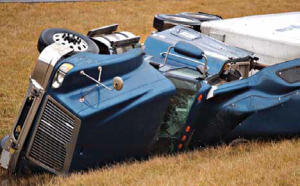 New Zealand employers and employees are set to face the biggest change to the health and safety regime in more than 20 years.
New Zealand employers and employees are set to face the biggest change to the health and safety regime in more than 20 years.
Changes have been introduced following the Pike River coal mine tragedy, and also various subsequent reviews which have observed a poor health and safety record in New Zealand in comparison to its OECD counterparts.
The establishment of WorkSafe New Zealand as the regulatory body communicates a strong message of the government’s intent to ‘tidy up’ health and safety across all sectors – especially in those proven areas of high risk.
It has been the well-publicised mining, forestry and port sectors which are a particular focus.
Comment has been made that the government has purposely targeted a high calibre of staff to run Work- Safe. This is reflected in an increase in spending committed to the new model compared to that under the old OSH administration.
The current level of funding is $53.7m a year. It will cost an extra $17.7 million in 2013/14 rising by an extra $25.3 million to $79.3 million in 2017/18. It is understood that these costs will be funded by an increase to the existing health and safety levy.
The implementation of the new regime will see more onus placed on managers and company directors to pro-actively manage workplace health and safety. A modified version of the Australian work health and safety model has been used as a template.
Together with stronger penalties and wider enforcement tools for noncompliance, it is intended that the regime will see significant improvement to New Zealand’s health and safety record.
Fundamentally, however, the process of managing hazards and controls within the business operation remain unchanged. The basic principles of good risk and safety management have always needed to be adhered to.
The difference now is that there will be explicit responsibility on managers, company directors and sub-contractors to manage risk and the safety of their workers.
Pro-active and functional management of risk and the safety of those in the workplace naturally makes good business sense. It is proven that investment in the management of risk improves productivity, staff engagement, as well as the business’s brand and reputation.
In summary, the reform will see the following actions:
- Clear, consistent guidelines and information for business on their requirement
- Significant funding for WorkSafe New Zealand to strengthen enforcement and education
- A focus on high-risk areas
- Stronger penalties, enforcement tools and court powers.
The introduction of WorkSafe and its dedicated mandate is being closely observed by the insurance industry. With stronger enforcement and policing, there is a likelihood that an increase will be seen in statutory liability insurance claims following unintentional health and safety breaches.
It should be noted, however, that the insurance industry has always monitored and applied appropriate excesses and premium charges depending on the risk of the industry sector and its claims outturn.
For example, in recent years, most insurers in the New Zealand market have ‘normalised’ their terms applied to clients in higher risk industries. It will be interesting to observe how the insurance market views things over the next year or so as WorkSafe New Zealand gets into its stride.
Article written by Eamon O’Connor, Director O’Connor Warren Insurance Brokers

